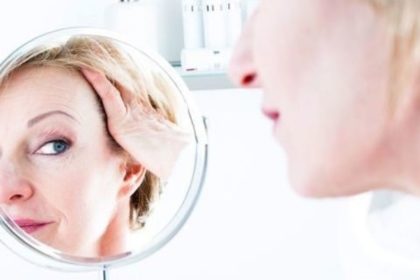 If you’ve ever had an annoying bout of athlete’s foot, jock itch, ringworm, or a vaginal yeast infection, blame it on fungus. Fungus, you say? Wait a minute… you had mushrooms on your salad last night. Aren’t they a form of fungus? Yep. A fungus is actually a primitive vegetable, just like mushrooms.
If you’ve ever had an annoying bout of athlete’s foot, jock itch, ringworm, or a vaginal yeast infection, blame it on fungus. Fungus, you say? Wait a minute… you had mushrooms on your salad last night. Aren’t they a form of fungus? Yep. A fungus is actually a primitive vegetable, just like mushrooms.
Fungi (pronounced “fun-guy”), the plural for fungus, live and reproduce in the air, in soil and water, on plants… and on YOU. Those embarrassing health conditions mentioned above are caused by an excessive amount of fungus growing on the surface of your skin. Think of that fuzzy green mold that grows on decaying old fruit hiding in the back of your frig or the mildew that grows on shower walls. Same idea.
Please Don’t Pass the Fungi
Fungi reproduce through tiny spores in the air. That means, you can inhale the spores or they can land on you! As a result, fungal infections often begin in your lungs or on your skin. That means they’re easy to get and PASS AROUND.
Only half of them are harmful, but they can be annoying, itchy and difficult to kill. If you have a circulation problem, weakened immune system, diabetes, or take antibiotics, you may be more likely to get a fungal infection. (Antibiotics may disrupt the balance of natural microflora in your system which causes fungi to overpopulate.) It’s important to get treatment at the first sign of a problem.
Where They Thrive
Fungi will grow on anything and can multiple in enormous mass. They grow best in areas that are warm, dark and damp, such as:
- Locker rooms
- Exercise machines that haven’t been disinfected after use
- Boxing gloves
- Shared towels, clothing or footwear (e.g., rental bowling shoes, ski boots, ice skates, or roller skates)
- Tanning beds
- Skin folds
- Toenails and fingernails
- Plastic gloves
Treatment
In healthy people, fungi don’t spread beyond the skin’s surface, so they’re easy to treat with a topical ointment. But for a serious and more persistent infection, you may have to take an oral antifungal medication.
Get Out of Gross Gear
 Since I’m always encouraging you to exercise which involves some degree of sweat, be aware that fungi grow in sweaty gear. Here are a few antifungal fitness tips:
Since I’m always encouraging you to exercise which involves some degree of sweat, be aware that fungi grow in sweaty gear. Here are a few antifungal fitness tips:
- Change out of your gym clothes, socks, shoes, and gloves right after your workout.
- Don’t toss your wet gym clothes in a hamper. Hang them up to air dry.
- Air out your gym shoes in the sun to dry. Don’t toss them in a dark closet or gym bag where air cannot circulate.
- Switch your shoes. This will give them a chance to fully dry.
- Sanitize and air dry your weight training/boxing gloves after each use. Don’t forget and keep them nestled in your gym bag!
- Wash your gym clothes as soon as possible. Be sure to dry them immediately after washing to prevent mold growth.
- Wear CLEAN gym clothes and completely DRY athletic shoes before each workout.
- Try wearing some breathable, antifungal socks for your long walks or workouts. They can help wick away moisture from your feet/toes.
- Don’t walk barefoot in damp communal areas, such as swimming pools, gyms and shower rooms. If you must sit down, park your backside on a clean dry towel.
If you have hyperhidrosis, a condition that is characterized by abnormally excessive sweating, change your clothing, socks and shoes when wet as well.
![]() Fit Tip: Sweaty gear is the perfect home for fungi and other germs to thrive and grow. Don’t marinate in a wet bathing suit and damp underwear or you’ll end up with an itchy assault that you’ll regret. Avoid cotton for wearing under there. For the guys: Check out some chafe-proof microfiber athletic underwear. For the gals: shop around for comfy sports intimates that’ll wick away moisture and “stay in place”.
Fit Tip: Sweaty gear is the perfect home for fungi and other germs to thrive and grow. Don’t marinate in a wet bathing suit and damp underwear or you’ll end up with an itchy assault that you’ll regret. Avoid cotton for wearing under there. For the guys: Check out some chafe-proof microfiber athletic underwear. For the gals: shop around for comfy sports intimates that’ll wick away moisture and “stay in place”.





